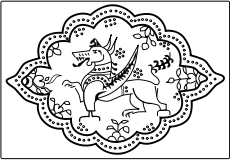Suklenmung
| Ahom dynasty | ||||||||||||||||||||||||||||||||||||||||||||||||||||||||||||||||||||||||||||||||||||||||||||||||||||||||||||||||||||||||||||||||||||
|---|---|---|---|---|---|---|---|---|---|---|---|---|---|---|---|---|---|---|---|---|---|---|---|---|---|---|---|---|---|---|---|---|---|---|---|---|---|---|---|---|---|---|---|---|---|---|---|---|---|---|---|---|---|---|---|---|---|---|---|---|---|---|---|---|---|---|---|---|---|---|---|---|---|---|---|---|---|---|---|---|---|---|---|---|---|---|---|---|---|---|---|---|---|---|---|---|---|---|---|---|---|---|---|---|---|---|---|---|---|---|---|---|---|---|---|---|---|---|---|---|---|---|---|---|---|---|---|---|---|---|---|---|
 | ||||||||||||||||||||||||||||||||||||||||||||||||||||||||||||||||||||||||||||||||||||||||||||||||||||||||||||||||||||||||||||||||||||
|
||||||||||||||||||||||||||||||||||||||||||||||||||||||||||||||||||||||||||||||||||||||||||||||||||||||||||||||||||||||||||||||||||||
Suklenmung (Assamese: স্বৰ্গদেউ চুক্লেনমুং) (1539–1552) was a king of the Ahom kingdom in medieval Assam. Since he established his capital at Garhgaon (which would remain the capital of the Ahom kingdom till the establishment of the Tungkhungia kings), he is also called the Garhgaiya roja in the Buranjis. It was during his reign that Madhabdev and Sankardeva's son-in-law Hari were captured and Hari executed,[1] which precipitated the departure of Sankardeva from the Ahom kingdom.
He was the first Ahom king to strike coins. The coins were octagonal in shape, with legends in the Ahom script.[2]
Ascension
Suklenmung became the king after Suhungmung, his father and the erstwhile king, was assassinated by one of his servants, Ratiman, in January 1539. Some Buranjis suspect that Suklenmung was behind the plot[3] even though Suklenmung tried to dispel the rumors by having the brothers of Ratiman, the assassin, executed.[4]
During his father's reign Suklen (as he was then known) offered the first defense against the Bengal invader Turbak in 1532, which he lost and in which he suffered personal injury grievous enough that he had to be replaced by the Borpatrogohain as the commander of the army.[5]
Territory
Suklenmung consolidated the kingdom's command over the regions captured from the Kachari kingdom, by moving the Baro-Bhuyan in the Kopili river valley closer to the capital. In 1546, the kingdom was invaded by the Koch commander, Chilarai, who advanced along a road constructed in secret by his half-brother, Gohain Kamal (and thus called Gohain Kamal Ali), along the north bank of the Brahmaputra river to establish a camp at Narayanpur in present day North Lakhimpur district. Suklenmung was able to remove the Koch army from the northbank.[6]
Administration
Suklenmung had the Garhgaon tank excavated, the Naga Ali constructed.
Notes
References
- Gait, Edward A (1906), A History of Assam, Calcutta
- Neog, Maheswar (1980), Early history of the Vaisnava faith and movement in Assam, Delhi: Motilal Banarsidass